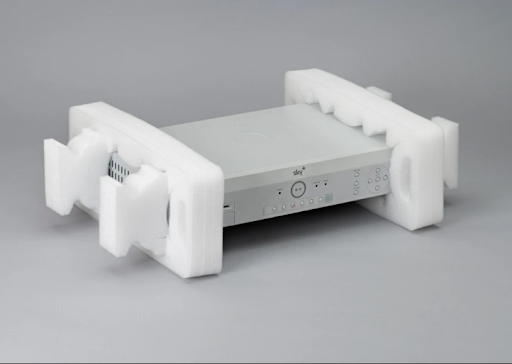127.0.0.1:62893: A Comprehensive Guide to Localhost and Port Communication
Introduction to 127.0.0.1:62893
When diving into networking, cybersecurity, or software development, you’ll often encounter a somewhat mysterious combination of numbers like “127.0.0.1:62893.” It might look like random digits, but there’s a lot of meaning packed into it. This article will unravel the concepts behind these numbers, explain what they represent, and how they interact in various computing environments. By the end, you’ll have a solid grasp of what 127.0.0.1 and port numbers, like 62893, are all about, and how they fit into the broader world of networking.
Understanding the Concept of 127.0.0.1
What Is 127.0.0.1?
At its core, 127.0.0.1 is an IP address. But unlike most IP addresses, which are used to identify devices on a network, 127.0.0.1 is special. It is known as the “loopback” address, and it’s part of a range of addresses reserved for testing and diagnostics. Specifically, 127.0.0.1 is the standard loopback address in IPv4 (Internet Protocol version 4) environments.
When you type 127.0.0.1 into a web browser or command line, you are essentially directing traffic back to your own machine. It’s like sending a letter addressed to yourself. This allows developers and system administrators to test software, networks, and services locally without needing access to external networks.
Why Use Loopback Addresses?
Loopback addresses are crucial for testing and diagnostics because they enable users to simulate network connections within their own machines. Whether you’re testing a web server, application, or network service, the loopback address lets you see how it behaves without exposing it to the wider internet. This enhances security and makes it easier to troubleshoot.
Breaking Down Port Numbers
What Are Ports?
Ports are another key concept in networking. While the IP address identifies a device on the network, the port identifies a specific service or application running on that device. Think of the IP address as the street address of a building, and the port as the door number of a specific apartment inside that building.
A port number like 62893 is essentially a gatekeeper for network communication. It allows different applications or services to run simultaneously on the same machine without interfering with each other. By assigning unique port numbers to different services, a device can manage multiple connections and requests at the same time.
How Do Ports Work?
Every time an application sends or receives data over a network, it uses a specific port. When a web browser requests a webpage, for example, it connects to port 80 or 443 (for HTTP and HTTPS respectively) on the server hosting the site. Meanwhile, other services, such as email or file transfer, use their own unique port numbers.
In the case of “127.0.0.1:62893,” 127.0.0.1 refers to your local machine, and 62893 is the port through which a specific service or application is communicating.
Understanding Localhost: The Practical Application of 127.0.0.1
What Is Localhost?
Localhost is a term often used interchangeably with 127.0.0.1. However, localhost refers to the hostname that maps to the loopback IP address of a computer. In other words, when you type “localhost” into a browser or terminal, your system resolves this to 127.0.0.1.
Using localhost is a common way to test software and services that run locally on your machine. It’s particularly useful for web developers, database administrators, and network engineers who need to ensure their applications are functioning correctly before pushing them to a live environment.
Localhost in Web Development
In web development, localhost allows you to run web servers on your own computer. For instance, tools like XAMPP or WAMP let developers run Apache web servers and MySQL databases on localhost, making it easy to build, test, and debug websites before they go live. Similarly, Node.js developers often run their applications on localhost, testing functionality without the need for a remote server.
Security Benefits of Localhost
Another benefit of using localhost is security. Since the traffic is restricted to your own machine, there’s no risk of external interference or attacks from outside networks. This isolation is particularly important when working with sensitive data or developing applications that might contain vulnerabilities during the early stages of development.
Exploring Port 62893 and Custom Ports
What’s Special About Port 62893?
You might be wondering, why 62893? What makes this port special? The truth is, nothing inherently distinguishes port 62893 from any other port number. In fact, this port is an example of an “ephemeral” port—a temporary port number usually assigned dynamically by the operating system.
Ephemeral ports range from 49152 to 65535 and are used for short-lived connections. These ports are generally used in client-server communication when a client needs to initiate a connection with a server, and the operating system selects an available port from the ephemeral range to handle the connection. This makes 62893 one of the thousands of available ports that can be used for short-term data transmission.
How Are Ports Chosen?
Typically, port numbers are selected based on the service or protocol being used. Some ports are well-known and reserved for specific services, such as port 80 for HTTP and port 25 for SMTP (Simple Mail Transfer Protocol). These ports are standardized across all devices and networks, ensuring compatibility.
However, many applications require custom or random ports to operate. In these cases, port numbers like 62893 may be selected dynamically by the operating system to facilitate communication between the client and server.
Port Security: Protecting Your System
Common Security Issues with Open Ports
While ports enable communication, they also introduce potential security risks. Any open port on a system is a possible entry point for malicious actors. Attackers often scan for open ports and attempt to exploit vulnerabilities in the services running on those ports.
For example, if an attacker finds an open port associated with a vulnerable service, they may try to compromise that service and gain unauthorized access to your system. This is why network administrators take great care to secure open ports, often by using firewalls and intrusion detection systems (IDS) to monitor and control traffic.
How to Secure Your Ports
One of the most effective ways to secure your ports is to close any that aren’t in use. Firewalls allow you to specify which ports are open and which are closed, limiting the number of potential entry points for attackers. Another approach is to use port forwarding with caution, especially when exposing services to the internet.
Regularly auditing your system for open ports is a good security practice. Tools like nmap can help you identify which ports are open on your system, giving you insight into any potential vulnerabilities.
Diagnosing Issues with 127.0.0.1:62893
Common Problems with Localhost and Ports
Although localhost and custom ports are incredibly useful, they can sometimes lead to issues. One of the most common problems is when a service fails to bind to a port because the port is already in use. This can happen if multiple applications are trying to use the same port or if a previous instance of the application didn’t close the connection properly.
Another issue arises from firewall or security software blocking certain ports, preventing the service from communicating as expected. If you’re testing a web server on localhost and it fails to load, this could be due to your firewall blocking the assigned port.
How to Troubleshoot Localhost Issues
To diagnose localhost issues, the first step is to check whether the port is in use. On most operating systems, you can use commands like netstat or lsof to see which ports are active and which processes are using them.
If the port is already in use, you’ll need to either stop the conflicting service or change the port number for your application. Adjusting firewall settings to allow traffic through the required ports may also resolve the issue.
Use Cases for 127.0.0.1:62893 in Development
Running a Local Web Server
A common scenario where you might encounter 127.0.0.1:62893 is when running a local web server for development purposes. By specifying this address and port combination, you can direct your web browser to connect to the server running on your own machine. This is useful when testing websites, APIs, or other network services in a safe and controlled environment.
Testing Networked Applications
Developers of networked applications often rely on loopback addresses and custom ports like 62893 to simulate network environments. Whether it’s a multiplayer game, chat application, or remote desktop service, these applications need to be tested thoroughly in a local environment before they are exposed to real-world networks.
Real-World Examples of Using 127.0.0.1 and Custom Ports
Web Development with Localhost and Ports
Imagine you’re a web developer building a Node.js application. During development, you might run the app on localhost at port 3000 (e.g., 127.0.0.1:3000). This setup allows you to test your app in a local browser while ensuring that it’s isolated from the internet. However, if you’re running multiple services, each one will need its own unique port. In this case, you might configure your second service to use port 62893 (e.g., 127.0.0.1:62893) to avoid conflicts.
Database Management and Localhost Connections
Database administrators often use localhost to connect to databases running on the same machine. For example, when managing a MySQL database, the connection string might be something like mysql://127.0.0.1:3306. Here, 3306 is the default port for MySQL. However, if you’re running multiple instances of the database, you could configure them to use custom ports like 62893, allowing you to manage several databases simultaneously without conflict.
Conclusion
The combination of 127.0.0.1 and a port number, such as 62893, might seem complex at first, but it’s a fundamental part of how computers and networks communicate. Understanding how IP addresses and ports work together can empower you to troubleshoot, secure, and optimize your own systems, whether you’re a developer, a network administrator, or just a curious user.
Localhost and custom ports enable safe and efficient testing of applications, while proper port management is crucial for security and functionality. Whether you’re building web applications, managing servers, or simply learning about networking, knowing how to leverage 127.0.0.1 and port numbers is a valuable skill in today’s interconnected world.









Post Comment